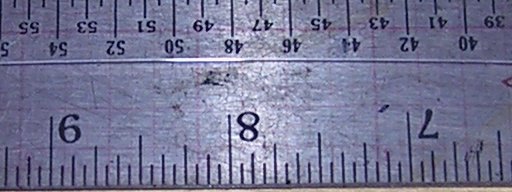I find ink blue, a custom color developed by Effetre at the request of Mike Frantz(?), to be rather frustrating because the quality control for the hue is so uneven. Sometimes it's a really lovely purple. Other times, it's a very very expensive cobalt. Wouldn't it be nice if there were a consistant blue-violet?
Well, as it happens, I think there might be: BE 1334, which is a striking purple—starts out blue, then changes to violet in the flame. The big problem with both Lauscha and the ASK (Arrow Spring Kugler) colors is that supposedly they're compatible with Effetre...but the level of compatibility depends upon the color, and the application.
Glassblowers, of course, deal with these issues as a matter of course, but beadmakers are spoilt rotten, and like our colors to work out of the box. I have a whole bunch of ASK colors to test, and, so far, this one new Lauscha color. (I actually have a sample set of older Lauscha colors from Glassdaddy...somewhere. And there is a beautiful, similar-to-EDP Lauscha purple Arrow Springs has been selling for years that is compatible).
So I decided, just for a lark, to test this color. There are several ways to test compatibility, but the easiest (and probably least accurate) is a thread test. You ball up a dab of one glass on a rod, melt the two into a ball split into two color-halves and then pull an ultra-thin stringer. By measuring the thickness and curvature of this thread, you can then punch these numbers into a formula (Jim Kervin documented a version of it as I recall) and it spits out a COE difference. Ideally you want at least an 18” thread. I usually measure the bow by laying the thread on a quilter's rule, but I couldn't find my long one; so I doubled up, using an 18” metal straightedge for length, and the foot-long quilter's rule for maxiumum bow:

This is a rotten photo, but you get the basic idea. Line up the ends of the thread with the bottom corners of the rule, measure the height of the bow. Use a micrometer to measure diamter. I have one of those C-shaped ones that goes to 1/10,000 of an inch.
The wizard was kind enough to write a little perl script, so all I have to do is type the measurements of the glass (in inches) into it:
- length: 18”
- bow: 3/4”
- diameter: .0136/.0177; .0009/.0124; .0143/.0175
- actual numbers used: 18”; .75; .0143
*Ideally* of course, one's thread is a) round in cross-section b) consistant in diameter along the measured length and c) has the same amount each glass in it. Obviously I failed completely with b) probably did so-so with a) and more or less succeeded with c). So, you need to take my numbers with a grain of salt. That in mind, when I punched the numbers in I got a difference of 3.12, and since the Effetre clear was on the top of the bow (see image below)...

This is a slightly better picture, and it's easier to see the parts of the thread. Note Eff004 is on top.
...this means it bowed more, that is, contracted more as the glass cooled. Since the two glasses started at the same COE (molten) it thus has the greater linear coefficient of expansion or COE. We know that, nominally, Effetre is 104. Subtracting 3.21 from 104 gives us roughly a coe of 101.
Despite the myth of effetre being perfectly self-compatible, it's not. So a good cross check would be to test clear against the similarly colored handpulled color ‘ink blue’. Opaque red, which is notorious for cracking when cased with clear, might be another good boundary setting test. I will note that thread tests of 004 (clear colorless) and 064 (very dark transparent purple, otherwise known as black) the threads consistantly come out perfectly straight.
Someday, I'd like to test all of the Effetre 000, 200 and 400 series colors against either clear or black (depending which is easier to see, since they test consistantly against each other, I figure the substitution is a valid one). And I have all those ASK colors to test, since I've heard varying reports of their compatibility, too. Not to mention that latest (only 2–3 years old) batch of 7000/8000 TE against BE glasses. And it would be fun to put a web-interactive version of the perl script online so other people could use the script for their thread tests, too.
It just never ends.
In the meantime, this would be a good glass for dotties, (and more hues are always better:) but I would be somewhat hesitant using it in large, layered beads such the dichro focals.
file created 17/18nov07
Unless otherwise noted, text, image and objects depicted therein copyright 1996--present sylvus tarn.
Sylvus Tarn